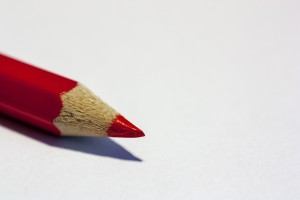 What do you do when your piece of writing no longer looks like the ideas, shapely rhetoric, and graceful sentences you put into it but a pool of melting ugh on the page? Ideally, you put it away—for a few hours, a day, a weekend, a decade. But if your deadline is within the hour? Hack the system.
What do you do when your piece of writing no longer looks like the ideas, shapely rhetoric, and graceful sentences you put into it but a pool of melting ugh on the page? Ideally, you put it away—for a few hours, a day, a weekend, a decade. But if your deadline is within the hour? Hack the system.
The system, in this case, is your brain. It is so smart that it knows how to read misspelled words and glosses over all kinds of minor obstacles to glean meaning. Also, it doesn’t spend time noticing stuff you’ve already seen; it’s after novelty. This system is great for the survival and development of our species but not so good at catching small (but potentially annoying and reputation-busting) errors in our own work.
How to Trick Your Brain into Noticing Errors
- Have someone read the paper to you. No one around? Read it out loud to yourself.
- Print it out. If you don’t usually do that, your brain will pay more attention.
- Change the font. Make it really big. Make it ugly. If the writing looks good in Comic Sans, it’s probably pretty good writing. (Just don’t forget to change it back!)
- Change the background color.
- Change your environment. Usually write at the kitchen table? Take your laptop or printed copy to a coffee shop, a library, your backyard—anywhere you don’t usually work on your writing.
Tech Hacks for Proofreading
Prefer to use an app to help you proofread? Here are some strategies to try:
- Use a speedreading app, like Readsy (on the web) or RushReader (for mobile). These apps use a technology called Spritz, which presents one word at a time in the same place, so your eyes don’t have to move. The purpose of these apps is to train you to read faster, but if you keep the adjustable speed on a slower setting, they’re great for proofreading, too. Here’s an example of what Readsy looks like in action:
- Use a text-to-speech app to have your computer or device read the writing to you. Most devices have some sort of text-to-speech app built in: VoiceOver for Mac and iOS devices; Narrator for Windows, Talkback for Android devices.
Do you have more proofreading hacks? Let us know!


